My better half and I were able to join friends on a beach walk yesterday. We hiked a little more than five miles from Goleta to Santa Barbara, and along the way we saw at least eleven sandpipers.

At least, I think the birds we saw were sandpipers. Perhaps those of you who are birders can help with the identifications.

All of the birds we were lumping in the category of sandpipers were wading along the shoreline and periodically poking their beaks in the sand, presumably to harvest and eat some tasty morsels.
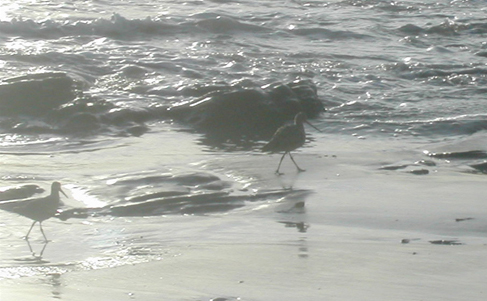
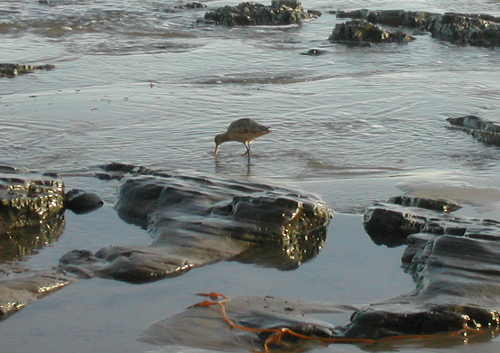
However, while these birds all looked pretty similar from a distance, on closer inspection we noticed some differences.
Some of these birds had fairly long beaks.
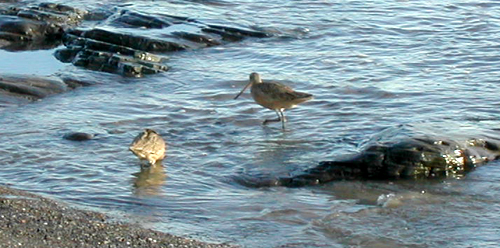
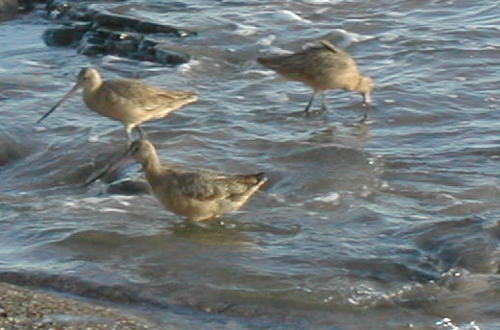
Others had relatively short beaks.
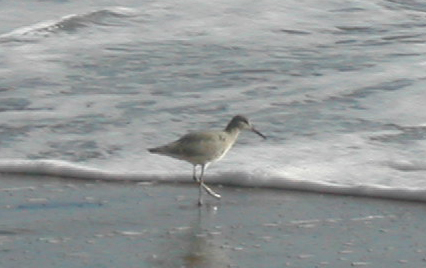
And some of them had beaks with a definite downward curve to them.
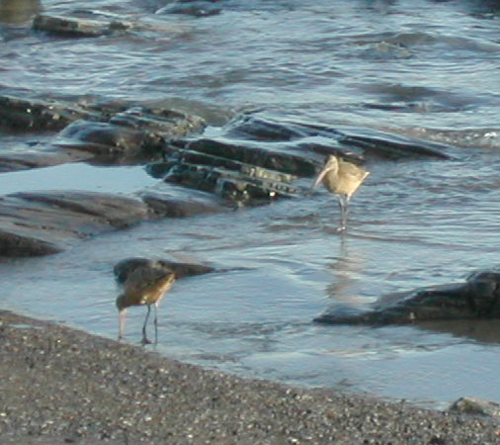
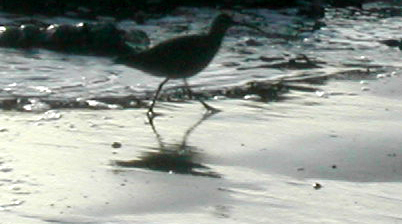
I suspect that the ones with the curved beaks are some manner of curlew, although I couldn’t tell you precisely which sort. However, as far as the birds with the straighter beaks, whether long or short, I have very little idea (despite detailed classification information online) just what we were looking at.
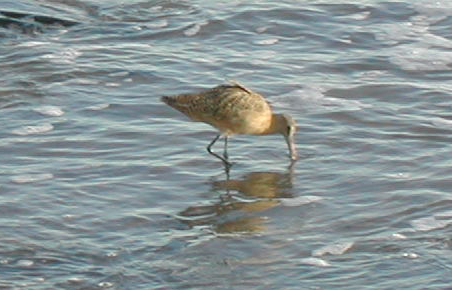
Can you identify these birds for us? Or give us some tips as to the key features we should be noticing to distinguish various members of the sandpiper family from each other?
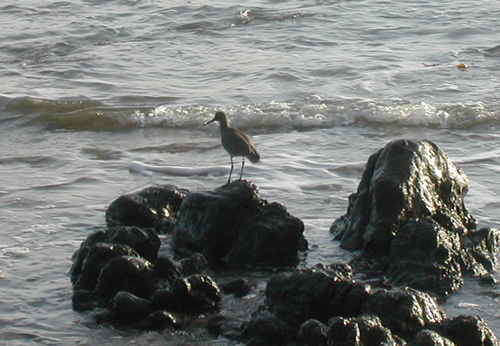

I would say that the long-billed birds are Marbled Godwit, based on the long, pink-with-black-tip beak. A second choice would be Long-billed Dowitcher, but their beak is not as long in proportion to the body, and the coloration doesn’t look right.
I think the curvy-beaked birds are Whimbrel, based mostly on the silhouette. Long-billed Curlew has a proportionally longer bill.
I think the birds in photos #1, 5, and 6 might be Dowitchers, probably the Long-billed species (Limnodromus scolopaceus). #7 might be a Willet, but I’d want to see it in flight, for the distinctive black and white pattern on the wings. #8 and #9, with the downcurved bills, might be Whimbrels, which are a species of curlew.
Shorebirds are more difficult to identify in nonbreeding plumage, of course, so I use bill shape and length, shapes of wings in flight, distinctive wing feathers, and leg length to identify. Relative body proportions help somewhat at a distance…sandpipers seem more compact than most of the birds you photographed, for example. Though I think they’re all in family Scolopacidae, so closely related.
#1, #5 and #6 are Marbled Godwits. #3, #4 and #10 are probably Marbled Godwits too but it’s less clear. #7 is a Willet and #11 is probably too. #8 (upright bird) and #9 are Whimbrels. #8 (head down) could be a Godwit, Whimbrel or Dowitcher and I rank the probability in that order.
Nice pics. I think it should be mandatory for everyone to take a trip to the beach at least once a year to air out the mind and get a renewed perspective!
Dave Briggs :~)